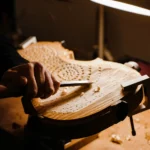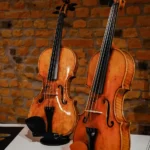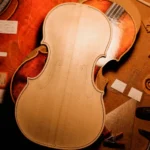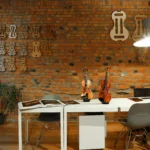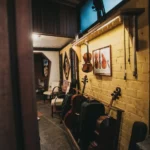Old Violin vs Copy: Which one should you invest in?
Back to BlogWhen we think of making smarter investment choices, it can be hard to decide between the right violin for your skills as a musician. You can either go for the old violin or a copy of an old violin. Both have their own pros and cons. Therefore, it is wise if you consider all factors before making a decision.
That’s why we are here, we will give you some background information on copies vs. old/modern violins, along with some helpful tips on investing wisely.
The modern and old violins on the market
The value of an old violin has many aspects, and prices for authentic antique violins are in the millions. Since genuine antiques are steadily decreasing in number on the open market, the value will only continue to increase. All antique violins have some inherent value, and these values are based on a variety of specific criteria and the current state of the antique market.
Usually, musicians seek these violins for their richer sound that is already well developed from the time of playing. The reason is violins, just like wine, build their sound with time and play. So, the more you play, the better it gets. Not only for the violin player but for the instrument as well.
Over time, varnish on an older violin may change in appearance, and many enthusiasts of historic violins appreciate this aging process. Patina is evidence of a natural process that varies depending on the varnish’s ingredients. Crackling can indicate that the varnish was poorly formulated, yet it can also be seen as an aesthetically pleasing kind of art created by coincidence.
Antique violins are believed to possess a certain romantic mystique. However, it isn’t the compelling refinement of their sound that helps them sell on the market. Some people say that whether or not an antique violin is valuable depends entirely on its sound quality.
The beauty of Violin Copies
While it is not common for a new violin to look old, it is well appreciated by musicians. To make a copy is not to imitate, but rather it is a form of expression and a way to keep passing on history. From Vuillaume and beyond, makers have built careers on doing this.
Antique is often used as a verb to describe the process of making an instrument look old, worn out, and scratched. The intention is not to be better than the great masters but to be inspired by them.
Violin copies go beyond mere craftsmanship; they reveal the artist’s personal style. A handmade instrument possesses a greater sense of freedom, allowing subtleties that are not visible in mass-produced instruments. The maker has the opportunity to show off his or her own artistic expression and add subtle details that can only come from a handcrafted instrument.
Both instruments can be equally good if handmade with high-quality materials, well adjusted over time, and with the proper care from the musician. Instruments with high quality will have many features, but mainly:
High-quality wood
Violins with more uniform woods are generally of higher quality, while those with a few flaming variations in tone and color are usually less expensive.
The Luthier Skills
The Stradivarius violin tops the list of most valuable violins, but the individual luthier who crafted each instrument can also make or break an antique violin’s value.
In the end, both old violin and a contemporary copy will be a great choice. The trick here is what suits best you, your skills, and your needs as a musician.
Many people will tell you that the best concert violins are the most expensive, but this isn’t true. You can find both good sound and great prices among violins made by modern and contemporary talented makers.
There are many options available for you when it comes to finding a violin. To start, define your budget and focus your search by choosing a price range. Once you’ve established a maximum amount that you can afford, the number of violins available will decrease significantly, and you’ll be able to focus on the specific characteristics of each instrument.
For example, if you’re looking for an instrument, consider the kind of sound you prefer. Do you like bright, warm, or dark sounds? We recommend listening to a variety of instruments so you can make an informed decision.





